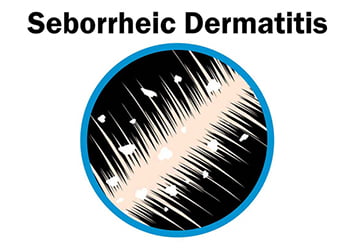By itself, seborrheic dermatitis isn’t harmful to your health. The condition, commonly referred to as dandruff, can be terribly embarrassing and cause uncomfortable itching. Untreated, you can develop infections from scratching. The same side effects affect your baby if she has the common form of the condition called cradle cap. First, be sure that seborrheic dermatitis is actually what you’re suffering from by visiting a dermatologist experienced diagnosing and treating the condition at Century Medical and Dental Center at one of three offices in Brooklyn. Then you can safely and effectively deal with the scaly side effects of seborrheic dermatitis.

Seborrheic dermatitis is a skin condition characterized by redness with white or yellow scales built up on the surface. When confined to the scalp, it’s often referred to as dandruff on adults and seborrhea, or cradle cap, on babies. The Brooklyn dermatology experts at Century Medical and Dental Center can tell you if your dandruff is a result of seborrheic dermatitis or due to some other common condition.
Unfortunately, seborrheic dermatitis can affect other parts of the body as well as the scalp; the most common are oily body parts such as the ears, eyelids, sides of the nose and chest. You can also develop the scaly skin condition in your belly button and in the folds of your legs, arms and groin. While it can afflict anyone, seborrhea is most prevalent in infants under the age of the three months. Seborrheic dermatitis also affects adults between the ages of 30 and 60. It tends to be more common in men than in women.
White flakes, which often produce a dusting on your shoulders, are a telltale symptom of the dandruff version of seborrheic dermatitis. It’s typically very itchy too. When seborrheic dermatitis develops on other body parts, the skin becomes itchy and red with a scaly appearance. If you scratch the area, it may bleed and develop an infection.
Infant seborrhea usually appears as crusty scales with a yellow or brown tint. While it can appear anywhere, it’s most common on the scalp and in the diaper area. If scratched, the skin may crack and bleed and become infected.
Unfortunately, the precise cause of seborrheic dermatitis still befuddles determined researchers. Nonetheless, they have discovered that there are numerous factors that seem to play a role. The most important are hormones, an exaggerated immune system response, and yeast living on the skin that’s actually a form of fungus.
Researchers have determined that neither poor hygiene nor allergies cause seborrheic dermatitis. Other factors that do seem to correspond with the occurrence of seborrheic dermatitis include:
Your doctor can diagnose your seborrheic dermatitis with a thorough visual examination and review of your medical history; no fluid or allergy tests are necessary. Nevertheless, it may be wise to scrape off some skin cells for a skin biopsy exam to make sure you’re not suffering from any other skin conditions, such as:
During your consultation, be prepared to answer multiple questions regarding your symptoms. Tell your doctor about any over-the-counter remedies you may have tried and if they worked or made the scaling worse. Your Brooklyn dermatologist also needs to know if you’ve been under any extraordinary stress.
“Friendly doctors and staff! Office was clean and comfortable. Doctor was caring and knowledgeable, taking time to really listen to me and answer all my questions.” - Katie Thigpen
200 Livingston Str,
Brooklyn, NY 11201
908 reviews
770 Flatbush Ave
Brooklyn, NY 11226
234 reviews
827 11th Ave
Manhattan, NY 10019
88 reviews
260 Ave X
Brooklyn, NY 11223
261 reviews
180 Myrtle Ave
Brooklyn, NY 11201
90 reviews
2315 3rd Ave
New York, NY 10035
40 reviews
For seborrheic dermatitis of the scalp, doctors generally first recommend trying over-the-counter, non-prescription treatments if you haven’t tried them yet. If other underlying medical conditions or skin disorders have been ruled out, conservative treatment options are always the first choice. Other traditional home remedies may include:
While most of the non-prescription products are safe to use when following the instructions, it’s always advisable to consult with your doctor when you use any medications. Your Brooklyn dermatologist guides you through the clutter of options available for seborrheic dermatitis treatment and designs a treatment program customized for you. Make an appointment with your Century Medical and Dental Center experienced Brooklyn doctor of medicine to get a firm diagnosis and directions for safe treatment.
Century Medical and Dental Center is an accredited healthcare facility in NY that operates in accordance with Article 28, a public health law. This law regulates and recognizes accreditation for public healthcare facilities, ensuring they are licensed and operated correctly. By undergoing the Article 28 process and achieving accreditation, Century Medical and Dental Center demonstrates its commitment to meeting the highest standards of care.
As a multidisciplinary medical center, we have highly qualified doctors, nurses, and support staff who are working hard to provide the best medical care to patients in Midtown Manhattan, NY, Downtown Brooklyn, NY, including Brooklyn Heights, Dumbo, Prospect Heights, Park Slope, Clinton Hill, Boerum Hill, Red Hook, Harlem, Gravesneck, Flatbush, and Bedford-Stuyvesant.